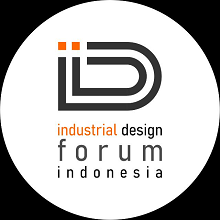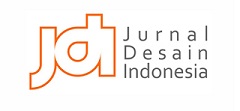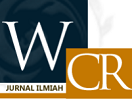ANALISIS METODE MIND MAPPING DALAM PROSES PEMBELAJARAN DESAIN GRAFIS
Abstract
This study is about the application of the mind mapping method done by a group of design students in the context of graphic design learning. Mind mapping is one of the thinking tools commonly used in the creative thinking process. The goal of this study is to analyze how the participants use this thinking tool and reflect upon its utility as a method applied during the divergent phase in the series of design process. The method used here is a case study, using mixed approaches of qualitative-descriptive and quantitative explanations to measure the qualitative aspects. Results show that the participants can do the mind mapping method, which essentially pertains to its functions, though not rigidly following the formal techniques taught by Buzan. Through comparing the mind maps produced by them with the grades they got for the exploration criteria of their design results, it’s yet to be concluded that the mind map quality can determine the quality of the resulting design.
Keywords
Full Text:
PDF (Bahasa Indonesia)References
Adodo, S. O. (2013). Effect of Mind-Mapping as a Self-Regulated Learning Strategy on Students’ Achievement in Basic Science and Technology. Mediterranean Journal of Social Sciences, 4, 163–172.
DOI:https://doi.org/10.5901/mjss.2013.v4n6p163
Amabile, T. M. (2011). The Social Psychology of Creativity (Softcover reprint of the original 1st ed. 1983 edition). Springer.
American Psychological Association. (n.d.). Creativity. Retrieved July 29, 2023, from www.apa.org/topics/creativity
Avdagic, E., May, F., McClean, T., Shackleton, F., Wade, C., & Healy, K. (2021). Mind Mapping as a Pragmatic Solution for Evaluation: A Critical Reflection through Two Case Studies. Practical Assessment, Research, and Evaluation, 26(1).
DOI:https://doi.org/10.7275/sqqw-ht68
Buzan, T. (2018). How to Mind Map: Make the Most of Your Mind and Learn to Create, Organize and Plan (US Only Ed edition). Thorsons Pub.
Cañas, A., & Novak, J. (2008). Facilitating the Adoption of Concept Mapping Using CmapTools to Enhance Meaningful Learning. Knowledge Cartography: Software Tools and Mapping Techniques.
Chen, J. (2008). The using of mind map in concept design. 2008 9th International Conference on Computer-Aided Industrial Design and Conceptual Design, 1034–1037.
DOI:https://doi.org/10.1109/CAIDCD.2008.4730739
Davies, M. (2011). Concept mapping, mind mapping and argument mapping: What are the differences and do they matter? Higher Education, 62(3), 279–301.
DOI:https://doi.org/10.1007/s10734-010-9387-6
Dong, Y., Zhu, S., & Li, W. (2021). Promoting Sustainable Creativity: An Empirical Study on the Application of Mind Mapping Tools in Graphic Design Education. Sustainability, 13(10), Article 10.
DOI:https://doi.org/10.3390/su13105373
DPMA. (n.d.). DPMA Trademarks—Mind Maps. Retrieved July 30, 2023, from https://register.dpma.de/DPMAregister/marke/register/2015931/DE
Eppler, M. (2006). A Comparison between Concept Maps, Mind Maps, Conceptual Diagrams, and Visual Metaphors as Complementary Tools for Knowledge Construction and Sharing. Http://Www.Alexandria.Unisg.Ch/Publikationen/54807, 5.
DOI:https://doi.org/10.1057/palgrave.ivs.9500131
Jiang, Y., & Liu, W. (2015). Application of Mind Mapping in Poster Design Classroom Teaching and Practice Guiding. International Journal of Sociology Study, 3(1), 49–52.
Justia Trademarks. (n.d.). MIND MAPS Trademark—Registration Number 1595757—Serial Number 73823774. Retrieved July 30, 2023, from http://trademarks.justia.com/738/23/mind-73823774.html
Kokotovich, V. (2008). Problem analysis and thinking tools: An empirical study of non-hierarchical mind mapping. Design Studies, 29(1), 49–69.
DOI:https://doi.org/10.1016/j.destud.2007.09.001
Lambert, V. A., & Lambert, C. E. (2012). Qualitative Descriptive Research: An Acceptable Design. Pacific Rim International Journal of Nursing Research, 16(4), 255–256.
Martin, B., & Hanington, B. (2012). Universal Methods of Design: 100 Ways to Research Complex Problems, Develop Innovative Ideas, and Design Effective Solutions (Digital ed). Rockport Publishers.
Miranti, M. G., & Wilujeng, B. Y. (2017). Creative Thinking Skills Enhancement Using Mind Mapping. 39–42.
DOI:https://doi.org/10.2991/iconhomecs-17.2018.9
Saldana, J. (2015). The Coding Manual for Qualitative Researchers (3rd edition). SAGE Publications Ltd.
Siwczuk, E. (2005). Mind Maps Ñ A Creative Thinking Tool In Information Technology. https://www.semanticscholar.org/paper/MIND-MAPS-%C3%B1-A-CREATIVE-THINKING-TOOL-IN-INFORMATION-Siwczuk/3c906561107197385d024c40d4cb25ac44b803ca
Tee, T., Azman, M. N. A., & Mohamed, S. (2014). Buzan Mind Mapping: An Efficient Technique for Note-Taking.
UK Intelectual Property Office. (n.d.). Trade mark: Mind Maps. Retrieved July 30, 2023, from https://trademarks.ipo.gov.uk/ipo-tmcase/page/Results/1/UK00001424476?legacySearch=False
DOI: http://dx.doi.org/10.22441/narada.2023/v10.i3.001
Refbacks
- There are currently no refbacks.
Fakultas Desain dan Seni Kreatif
Universitas Mercu Buana
Gedung E Lantai 4
Jl. Raya Meruya Selatan no.1, Kembangan, Jakarta 11650
Tlp./Fax: +62215871335
Journal International Standard Serial Number (ISSN) Registration:
The Journal is indexed by:
Tools for Citations & Plagiarism Detection:

Ciptaan disebarluaskan di bawah Lisensi Creative Commons Atribusi-NonKomersial 4.0 Internasional
 NARADA: Jurnal Desain dan Seni
NARADA: Jurnal Desain dan Seni

























